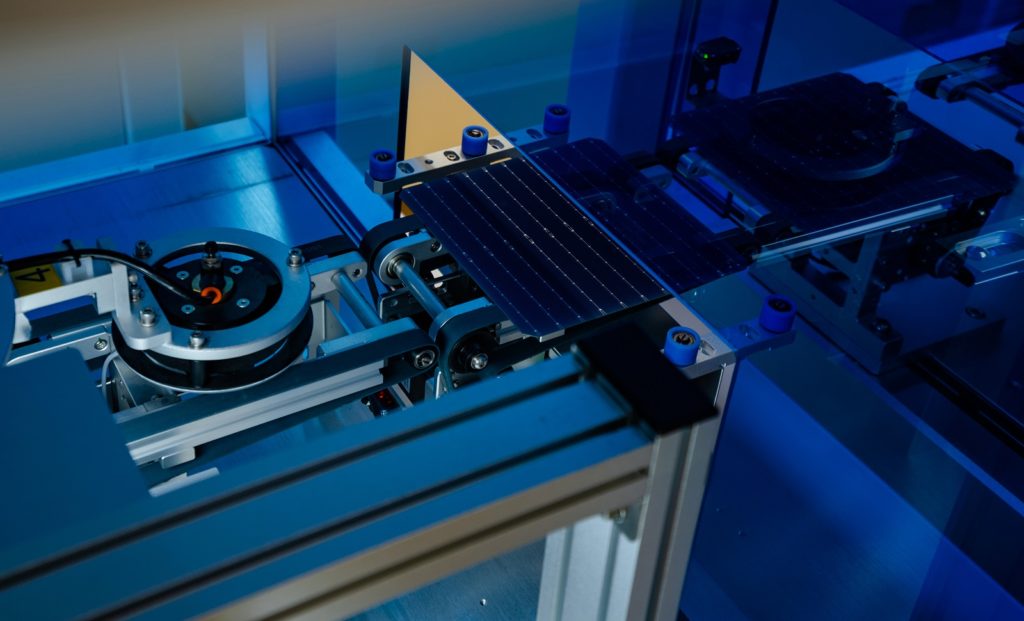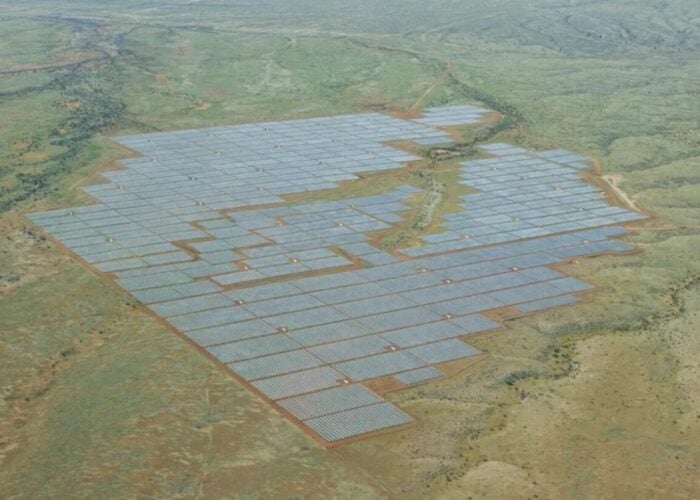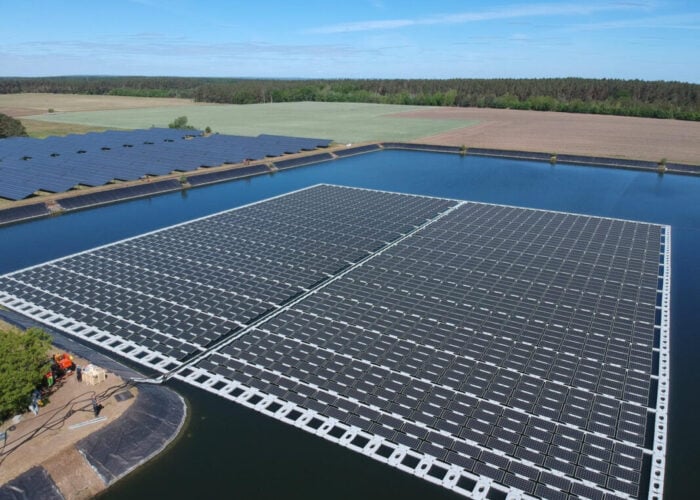
Earlier this year, research organisation Ember Climate published a report into the world’s “solar boom”, noting that increased appetite for new solar projects has helped drive a flurry of investments into solar capacity installation and new international deals for solar materials, from components to whole modules.
In the months since, other developments in the global renewables sector have supported this newfound interest in solar power. At the COP28 conference in Dubai, representatives form 118 countries signed a pledge to increase the world’s renewable energy capacity to 11TW by the end of the decade, with around half of this to be met with solar projects.
Unlock unlimited access for 12 whole months of distinctive global analysis
Photovoltaics International is now included.
- Regular insight and analysis of the industry’s biggest developments
- In-depth interviews with the industry’s leading figures
- Unlimited digital access to the PV Tech Power journal catalogue
- Unlimited digital access to the Photovoltaics International journal catalogue
- Access to more than 1,000 technical papers
- Discounts on Solar Media’s portfolio of events, in-person and virtual
Similarly, the latest generation of National Energy and Climate Plans (NECP) in Europe have set out new targets for the continent’s solar sector, with European governments now aiming to add 90GW more solar capacity than under the previous iterations of the NECPs.
However, this combination of factors – greater interest in new solar developments and loftier solar power targets in Europe in particular – has created a unique challenge for the European solar sector. The low cost of importing modules from overseas, and China in particular, has all but rendered the European manufacturing sector unviable, a topic that has been covered at length on this site, and that has led to Solar Media head of market research Finlay Colville calling the flow of modules from China to Europe “out of control”.
This phenomenon is reflected in Ember’s research, with the organisation noting that, in the first half of 2023, 58% of Chinese solar module exports reached Europe. The number of modules sold from China to Europe also increased 47% year-on-year, culminating in 66GW of new Chinese modules being added to the European solar sector in the first half of the year alone.
While not all of these modules have been installed at operational projects, this remains a vast quantity of panels, which reflects Europe’s reliance on Chinese exports. For context, trade body SolarPower Europe expects Europe to add a record of 56GW of new capacity in 2023, a figure that would not only be met, but exceeded, by just six months’ worth of Chinese imports.
While an abundance of Chinese modules could help many of the world’s energy markets meet their climate change targets in the short-term, such a reliance on a single producer would leave many of these industries precariously balanced. From the US to Europe, and Latin America to Africa, a governments and developers around the world have tested a number of approaches to balance these delicate circumstances.
Investments in manufacturing and technology
Much of China’s dominance of the global solar sector in general, and that of Europe in particular, comes from China’s significant investment into solar capacity additions. Ember notes that China accounts for “at least” 80% of the world’s solar manufacturing capacity, highlighting the world’s reliance on Chinese manufacturing.
Crucially, the rate of capacity additions in China is set to grow in line with, or even exceed, the rate at which the world’s appetite for solar power increases. A report from Wood Mackenzie, published in December this year, found that the world is likely to add a total of 3TW of new solar PV installations between 2023 and 2032, while a separate report from the same company noted that China’s annual cell and module production capacity will reach 2.8TW by 2032.
To put it another way, one year of Chinese manufacturing work could almost single-handedly meet a decade of the world’s demand for new solar capacity, and Wood Mackenzie noted that, if current trends continue, China will be able to meet the entirety of the world’s demand for new solar projects by 2032.
China owes much of its continued manufacturing dominance to its vast investments into the solar sector, with the graph above showing how China is expected to invest the greatest proportion of its GDP into the solar industry between 2020 and 2038. China’s all-time peak of investment as a proportion of GDP, 3.57% in 2028, is also the most any country is expected to invest in a single year over the next three decades, and far exceeds the global average proportion of solar investment, which will sit at 1.28% in 2028.
Yet China’s investments have not only affected the quantity of its module production, but the technologies in which its industry is producing. Major Chinese manufacturers, including JinkoSolar, JA Solar and Trina Solar, have all invested heavily in tunnel oxide passivated contact (TOPCon) modules this year, creating competitive conditions where developers are eager to not only invest in TOPCon construction and distribution, but are looking to one-up one another in the sector.
In October, industry leader JinkoSolar announced that it had shipped a record of 21.3GW of modules in the third quarter of the year, a 108.2% increase year-on-year. These sales contributed to the company’s all-time sales figures of 190GW of modules, which it claimed was a record in the solar sector, and the increasingly competitive Chinese market has driven each of the industry’s players to new heights of manufacturing and sales.
Increasing Chinese exports
This sustained growth in Chinese module production has, unsurprisingly, led to sustained growth in module exports beyond China, with the supply of modules made in China exceeding the demand for them within its borders. While China’s energy demand is massive – the government reported that China consumed 5.41 billion tons of coal equivalent in 2022 – much of this is met by coal itself, with coal accounting for meeting 56.2% of China’s energy demand last year.
Between 2021 and 2022, the contribution of renewable power to meeting China’s energy demands increased just 0.4 percentage points to 25.9%, and China added more than twice as much new wind capacity in 2022 as solar. As a result, with solar panels not needed to meet China’s domestic energy needs, many of these panels are being sold overseas, with Ember reporting that China sold 114GW of panels worldwide in the first half of 2023, a 34% increase over the volume sold in the first half of 2022.
This is more than the total solar capacity the US installed in the first half of 2023, which stood at 113GW, and demonstrates both China’s overwhelming supply of modules, but also its willingness to sell them overseas and expand its influence.
The vast majority of these modules have been sold to Europe, as the graph above shows. Ember tracks sales of Chinese modules to a number of jurisdictions each month, with sales figures for the first ten months of the year available, so the 2023 figures are projections based on the rate of sales in the first ten months of the year. It is clear that Europe dominates imports of Chinese modules, with European developers set to purchase over 110GW of Chinese panels in 2023, more than ten times the capacity purchased in Africa.
While the US has a significant, and growing, solar sector, it has sought to meet much of its solar demand through domestic manufacturing, rather than import modules made overseas. Much of this has been inspired by the Inflation Reduction Act (IRA), which has offered financial benefits for US companies developing renewable infrastructure within US borders, rather than purchasing materials from other countries.
While this has stunted the growth of the US solar sector compared to that of China, it is likely such a policy has helped avoid the situation currently affecting Europe, where the European solar sector is so reliant on Chinese imports that the domestic manufacturing sector is essentially worthless. This situation has drawn criticism from analysts, with experts at S&P Global and Glennmont Partners telling PV Tech Premium that this massive influx of Chinese panels has left the European solar sector highly fragile.
Questions for the rest of the world
The variation in the responses of the US and Europe to China’s dominance of the manufacturing sector represent the two most extreme potential reactions: a complete shut-down of Chinese imports, and a damaging reliance on Chinese manufacturing. However, outside of these markets, alternative responses to Chinese manufacturing dominance have emerged.
One example is in Latin America where, as demonstrated in the earlier graph, the region has increased its import of Chinese modules each year between 2017 and 2023, the only region to do so other than Europe, whose over-reliance on Chinese modules makes it something of an outlier. Panama, for instance, has embraced a balanced approach to expanding its solar sector, combining courting foreign investors and ambitious, but attainable, renewable energy targets to encourage more replicable, and perhaps sustainable, growth than seen in Europe.
For instance, solar power accounted for 11% of the Panamanian power generation mix in 2022, and the government aims to meet 70% of its energy demand from all renewable sources by 2050, an achievable goal that defines solar as one of a number of renewable energy sources that will collectively make up the majority of the country’s energy mix, rather than a single dominant power source.
Module sales to African countries have also increased over the last seven years, with the graph below showing how South Africa has come to dominate African imports of Chinese modules. While Egypt accounted for the majority of Chinese imports towards the end of the 2010s, Egypt has since shifted its focus to importing modules from other markets, with US and Spanish developers signing supply deals in the latter months of this year.
Meanwhile, South Africa has sought to use China’s massive manufacturing capacity to meet its own ambitious renewables targets, with the International Energy Agency (IEA) and African Development Bank (ADB) reporting that in 2022, nearly half of the US$2.7 billion invested into new energy projects in the country went towards new solar PV projects. However, with South Africa lacking the manufacturing capacity of China, it remains to be seen how it will meet its growing solar demand in the coming years, without falling into the same trap as many European developers.
Perhaps an encouraging model is that at work in Zimbabwe, which has a much smaller solar sector than many of the other countries profiled in the graph above, but is looking to strike a balance between reliance on Chinese imports and meeting the demand of the energy transition.
In March, the China Enegineering Corporation announced plans to build a 1GW floating solar facility in the country, and Anthony Phiri, director of environmental management at the Renewable Energy and Climate Change Center at the Harare Institute of Technology, told PV Tech Premium that such a project could be “a great idea”.
Phiri suggested that, in the short-term, reliance on an industry giant such as China could help Zimbabwe meet its ambitious clean energy targets, and help lay the foundations for an energy industry that is more self-sufficient, and able to build and manage its own projects independently of Chinese investment. Of course, with China dominating so much of the global solar manufacturing sector, realising this delicate balance will be a challenge.






